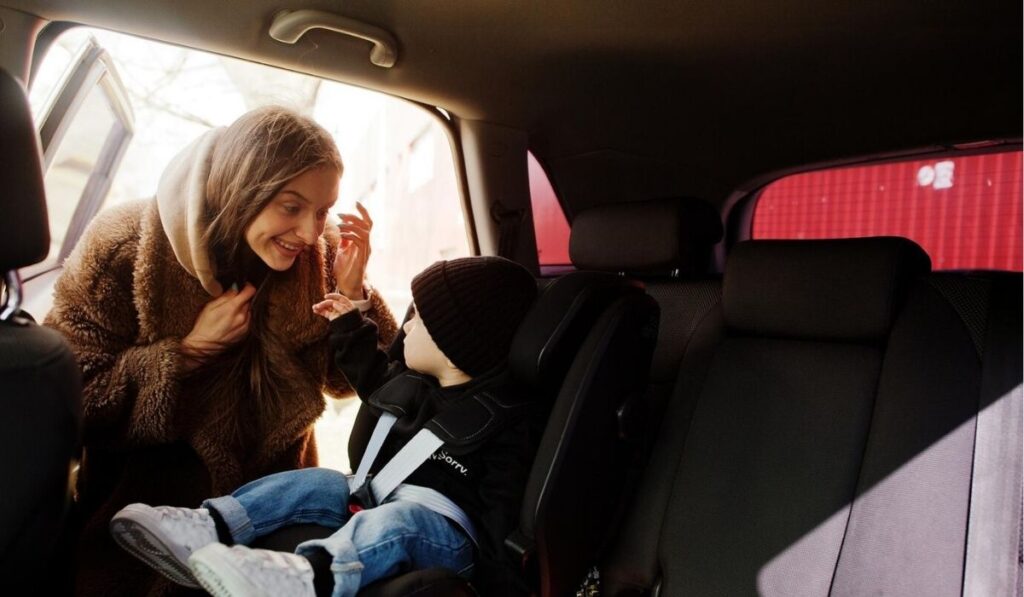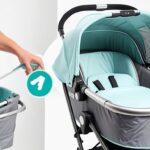As an Amazon Associate. I earn from qualifying purchases
Traveling with children can be an adventure in itself, filled with excitement and sometimes, unexpected challenges. One crucial aspect that every parent must prioritize is the safety of their child, and booster seats play a significant role in this. According to the National Highway Traffic Safety Administration (NHTSA), using the appropriate car seat, booster seat, or seat belt significantly reduces the risk of injury and fatality for young passengers in case of a crash. As you prepare for your next trip, understanding how to travel with booster seats will ensure your child’s safety and give you peace of mind.

Types of Booster Seats
Different Types of Booster Seats
Booster seats come in various styles, each designed to accommodate different stages of your child’s growth:
- High-Back Boosters: These seats offer head and neck support and are ideal for vehicles without headrests or with low seat backs.
- Backless Boosters: These are more portable and convenient for older children who require a boost to use the vehicle’s seat belt correctly.
- Combination Seats: These versatile seats transition from a forward-facing car seat with a harness to a booster seat, growing with your child.
Weight and Height Requirements
Each booster seat has specific weight and height requirements. Generally, children should use a booster seat once they outgrow their forward-facing car seat, usually around 40 pounds and 4 feet 9 inches in height. For advice on correct usage, always check the manufacturer’s instructions..
Legal Regulations
Laws regarding booster seat use vary by state and country. Learn about the rules in your area to be sure you’re following them. In the United States, most states mandate booster seats for children until they are at least 8 years old or reach a height of 4 feet 9 inches.
How To Travel With Booster Seats
Traveling with children can be a challenge, but ensuring their safety should always be a top priority. Knowing how to travel with booster seats properly can make your journey smoother and safer for everyone involved. Here are some essential tips and guidelines to follow:
Packing the Booster Seat
When preparing for your trip, consider packing a booster seat instead of relying on rental options. This will ensure you have the right seat for your child and eliminate any additional costs or risks associated with using an unknown booster seat.
- Check the Dimensions: Ensure that your booster seat fits into your vehicle correctly. Some boosters may be too wide or tall for certain car models, compromising safety.
- Protective Cover: Use a protective cover to keep the booster seat clean and prevent damage during travel. You can also use this cover as a storage bag for your child’s belongings.
Installing the Booster Seat
Proper installation of the booster seat is crucial for its effectiveness in protecting your child. Follow these steps:
- Read the Manual: Always refer to the manufacturer’s manual before installing the booster seat. This will help you understand its features and how to install it correctly.
- Positioning: Place the booster seat in the back seat of your vehicle, preferably in the middle, away from side airbags. Ensure that it is securely fastened with the vehicle’s seat belt.
- Seat Belt Positioning: The lap belt should fit comfortably over your child’s thighs, while the shoulder belt should rest across their chest and shoulders. Adjust the booster seat accordingly to achieve this positioning.
- Secure Installation: Test the installation by gently pulling on the booster seat to ensure it does not move from side to side or front to back.
Additional Tips for Traveling with Booster Seats
- Use the Seat Belt Correctly: Teach your child how to use the vehicle’s seat belt correctly when sitting in a booster seat. This includes keeping the belt low on their hips and avoiding putting it behind their back or under their arm.
- Plan Ahead for Airplane Travel: If you plan to travel by plane, contact the airline beforehand to understand their policies on booster seats. Some may allow you to use it during the flight while others may require you to check it in with your luggage.
- Take Breaks During Long Trips: Plan for frequent breaks during long car rides, allowing your child to stretch and move around. This will also prevent them from sitting in the same position for an extended period, reducing any discomfort.
- Be Patient and Stay Safe: It may take some time for your child to get used to a booster seat, especially if it’s their first time using one. Be patient and ensure that they are buckled in correctly before starting your journey.
What is the easiest way to travel with a booster seat?
The easiest way to travel with a booster seat is to pack your child’s own booster seat and install it in the backseat of your vehicle. This ensures that you have the proper fit for your child and eliminates any safety concerns associated with using a rental or borrowed booster seat.
Can I bring my child booster seat on a plane?
You can bring your child’s booster seat on a plane, but it may be subject to the airline’s policies. Some airlines allow you to use the booster seat during the flight, while others may require you to check it in with your luggage. It’s best to contact the airline beforehand and understand their guidelines for traveling with a booster seat.
In place of a booster seat, what can I use?
There are no recommended alternatives for a booster seat as it is specifically designed to provide the necessary support and protection for children while traveling in a vehicle. However, if you are unable to use a booster seat, ensure that your child is properly secured with the vehicle’s seat belt and that they meet the height and weight requirements for using just a seat belt.
It’s always best to consult with a certified car seat technician for guidance on proper restraint use. Overall, the safety and comfort of your child should be the top priority when traveling, so it’s crucial to follow manufacturer guidelines and any applicable laws or regulations. By understanding how to travel with booster seats and following these tips, you can ensure a safe and enjoyable journey for everyone involved.
Choosing the Right Booster Seat
Factors to Consider
When selecting a booster seat, consider the following factors:
- Child’s Age, Height, and Weight: Ensure the seat accommodates your child’s current size and growth.
- Vehicle Compatibility: Check if the booster seat fits well in your vehicle and is easy to install and secure.
- Safety Features: Look for seats with additional safety features such as side-impact protection and energy-absorbing foam.
- Ease of Use: Consider how easy it is to install, adjust, and clean the booster seat.
Compatibility with Different Vehicles
Not all booster seats fit perfectly in every vehicle. Test the seat in your car before purchasing, ensuring it sits flush on the seat and the seat belt fits correctly through the guides.
Travel Tips with Booster Seats
Air Travel
When flying, check with your airline about their policies on booster seats. While most airlines do not allow booster seats to be used on the plane, you can still carry them as checked luggage or gate-check them.
Rental Cars
When renting a car, ensure you request a booster seat ahead of time. However, bringing your own booster seat guarantees it meets your safety standards and familiarity.
Public Transportation
For buses and trains, where booster seats are typically not feasible, prioritize other safety measures such as having your child sit in a secure seat and using available seat belts.
Conclusion
Traveling with a booster seat is essential for your child’s safety and comfort while on the road. Proper installation, using the seat belt correctly, frequent breaks during long trips, and planning ahead for air travel are crucial aspects to consider when traveling with a booster seat. By following these tips and understanding how to choose the right booster seat for your child, you can ensure a safe and stress-free travel experience. Remember, always prioritize your child’s safety and consult with certified professionals for any doubts or concerns.
FAQs
Can I use a booster seat for my newborn?
No, it is not recommended to use a booster seat for infants and young children. They should be seated in a rear-facing car seat until they outgrow the weight or height limit specified by the manufacturer.
Do booster seats have an expiration date?
Yes, most booster seats have an expiration date of 6-10 years from the manufacturing date. Check the label on your booster seat for specific information.
Are backless boosters safe?
Backless boosters are generally considered safe, but they may not provide adequate head and neck support in case of a side-impact crash. Consider using a high-back booster if your child falls asleep frequently during car rides.










